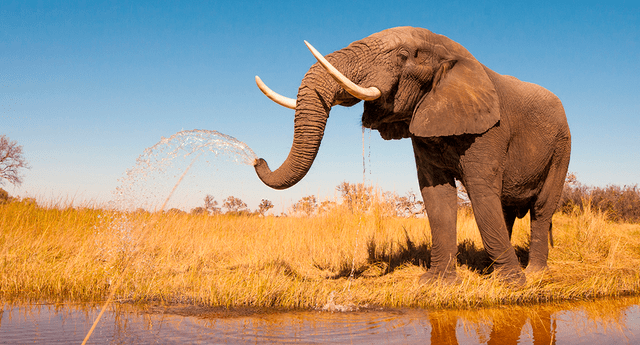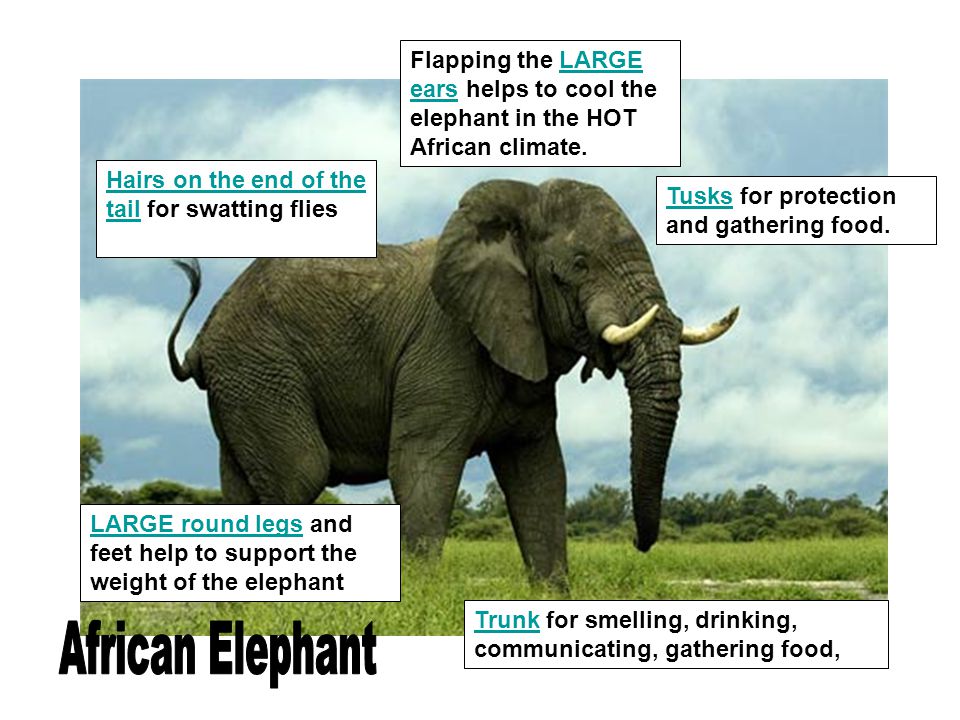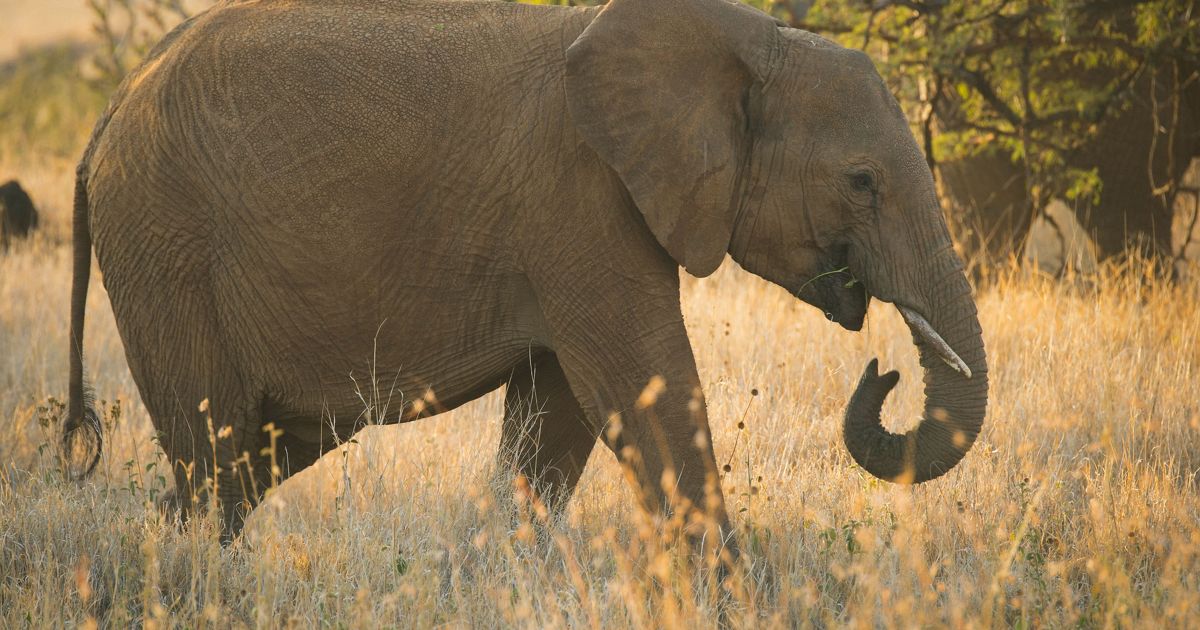Describe One Adaptation of Elephants That Helps Them Survive
What are the adaptations to help Asian elephants survive in the wild. They are white which helps them blend in with the snow.
Elephants need big flat teeth to help them grind down leaves and twigs.

. Elephants massive size is a great anti-predator adaptation. They have an extremely long large intestine that absorbs every last drop of water from the foods they eat. It is estimated that nearly 60 percent of elephant feces is undigested or partially digested vegetation.
Long ears help them in hearing the. Broad and flat feet so they dont sink in the sand and walk easily. Thick and tough lips help them to pick at dry and thorny desert plants.
Although theyre technically prey animals rather. Most of them are nocturnal and are mainly active at night when it is cooler. Narrow nostrils and hairy ears also help them to keep out sand.
3 Development of trunk tusks and large ears and feet. An adaptation is a characteristic that helps give an owl species its best chance at survival. Elephants eat enormous amounts of vegetation daily but the digestive system only uses about 40 percent of the intake.
They can drink up to 32 gallons 46 liters of water at one go. Some more physical adaptations are that it has a trunk used for lifting things which is about 5 feet tusks for digging and eating and their big circular shaped ears 4 ft that help cool them down. They are adapted to survive a long time without water and food.
Long legs protect them from sand heat. Owls live in many different environments but have evolved in order to stay near the top of the food chain. This poor absorption of nutrients is one of the reasons why elephants are considered a keystone.
The Adaptations of Elephants for Survival Size. They also have tusks that are made of. Adaptive Features Adapted by Elephants for Living in the Tropical Rainforest They have a strong sense of smell and uses their trunk for smell.
They have long eyelashes and thin slit nostrils that they can close to protect them from blowing sand. 1 A skin colour which helps them to camouflage mix up with the surroundings and hide in order to catch prey or protect themselves from predators. They have many physical and behavioral adaptations that help them survive in hot dry places.
They have long ears which help them in keeping cool in a hot and humid climate. They also use their trunk to hold food. They can go for a week or more without water.
They have wide feet for walking in sand. Their big ears help them to stay cool with their many blood vesselswhere hot blood becomes cool blood. Up to 24 cash back The elephant has a thick layer of skin to protect it from the heat.
If they did not have nostrils that close underwater they would not be able to hunt for food. Here are several specific examples of animal adaptations caused by evolution. Describe one adaptation that may help an animal survive in the taiga.
Tigers need sharp strong teeth to rip apart food. 2 Running very fast. Elephants have a well developed trunk that helps them in both foraging for food and in drinking water.
Owl adaptations include feathers for silent flight facial discs asymmetrical ears tufts 270 degree head rotation. Elephants have many adaptations that allow them to thrive in their warm habitats. Their nostrils close so when they swim they can breath under water.
Eagles need powerful beaks to open the thick hide of their prey. Describe two desert animals and the adaptations that help them survive. Reptiles have thick scaly skin to help prevent water loss.
One evolutionary theory says the maned wolfs long legs evolved to help it survive in the tall grasslands of South America. When youre a large creature with a short neck a trunk is an extremely useful part. The maned wolf pictured is part of the canid family and a relative of other wolves coyotes foxes and domestic dogs.
Elephants have special structural features such as tusks trunks teeth ears and size that help them adapt and survive in their habitats. An elephants size can help to deter predators and tusks can be used for defense and to dig up roots out of the ground.

Onboarding Talent Development Of New Employees What We Can Learn From Elephants And Neuroscience

African Forest Elephant Species Wwf

Elephant Facts Types Classification Habitat Diet Adaptations Elephant Facts African Bush Elephant Elephant Species
Adaptations Ecology Of The African Bush Elephant

Adaptations Organisms Living Things Like Plants And Animals Have Many Ways To Survive And Be Successful Ppt Download

Animal Adaptation Lessons Blendspace

Elephant Adaptations Animal Adaptations Elephant Adaptations Adaptations

Elephant Adaptations Lesson For Kids Video Lesson Transcript Study Com
Uw L Homepageasian Elephant Ele

African Bush Elephant The Nature Conservancy
Uw L Homepageasian Elephant Ele

Elephant By Morgan B Ppt Video Online Download

African Savanna Elephant Species Wwf

Elephant Behavioral Adaptations You Must Know Notes Read
Uw L Homepageasian Elephant Ele

Elephant Adaptations Lesson For Kids Video Lesson Transcript Study Com

Elephants The Biggest Land Animal Alive Ppt Video Online Download
.PNG)
Comments
Post a Comment